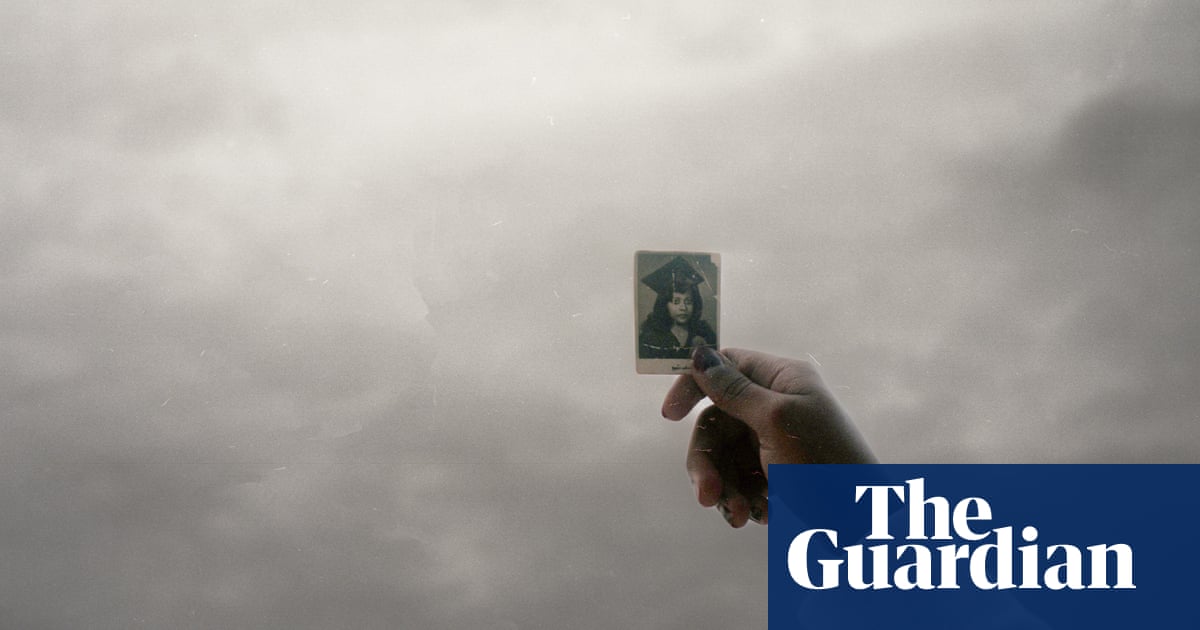With his new show, Yusuf Ahmed is challenging traditional expectations of who belongs in the narrative of American history. Beyond Nostalgia and Dreams showcases Ahmed’s breathtaking photographs that explore the identities of young Black, brown and queer adults through the use of objects of their choosing that represent their personal history and resilience. It’s a direct act of defiance against efforts by Donald Trump’s administration to erase marginalized communities from history through the banning of DEI and Black history in the federal workplace.
“We’re looking at an administration that’s trying to distort history, suppress the archives, and remove any display or representation of our identities,” Ahmed says. “I think it’s important, especially here in the US, to continue pushing [the] message forward that we exist, that our lives are expansive, and that we hold so many different identities.”
Ahmed has embodied many identities. He was born in Ethiopia and later moved to Kenya between the ages of five and10. After living in Kenya, his family came to the United States, where he grew up in Ohio, and he now resides in Harlem, New York.
Migrating from one place to another, Ahmed has learned to assess which belongings to keep and which to leave behind. During his journeys, one item he never went without was his archive of the more than 300 images he made of his sister when he was 11.
When he moved to the US, Ahmed bought a disposable camera and photographed his sister, his first encounter with photographs. But it wasn’t until years later, in a photography class in college, that he realized his passion for images. The importance of his sister’s pictures inspired Beyond Nostalgia and Dreams and Ahmed hopes the exhibit will evoke a sense of nostalgia for viewers to forge a deeper connection with its subjects through the sentimental aesthetic of medium-format film.
Aby, one of Ahmed’s subjects, is photographed with a family photo album he carried when he left Ethiopia after being adopted by a French family. The album, which included an image of his mom who died, became the only object he had to validate his childhood in Ethiopia.
Growing up, Aby’s adopted family refused to teach him about his family and heritage in Ethiopia, telling him he was too young to remember his time there and that he had made up his memories of home. Ahmed says: “Having that album for him was powerful because it validated that what he imagined was, in fact, true.” Ahmed’s quiet, poetic image reshapes history for Aby, serving as a tool to resist his adopted family’s attempt to erase his story.
Ahmed’s picture brings the viewer into a personal moment of reflection for Aby whose story reminds Ahmed of how people have used photography to deny Black and brown people their personhood by portraying them in public forums and schools in dehumanizing ways. Aby’s story is an example of how Ahmed has used photos to create portraits rooted in love that become living records of his subjects’ existence.
The series also sheds light on the daily struggles of queer people in Africa, experiences often overlooked in mainstream conversations. Maroodi, a transgender woman, is photographed with a charm she wore to rebel against the Muslim men’s culture that prevented her from wearing jewelry in Kenya. Before she transitioned and moved to Ohio, she often hid her jewelry under her shirt whenever she went outside.
In Ahmed’s simplistic yet striking image of Maroodi, she sits on her bed with the charm on her arm below her tattoo of a woman’s body. Through the shadowy lighting of her body, the photograph encapsulates the darkness she experienced and the hope she has now. With the photo, Ahmed aims to place queer African people in the everyday conversations they are often left out of. “People erase queer Africans out of the narrative,” he says. “It’s critical for the archives to include the complexity of our lives.”
When imagining his self-portrait in the series, Ahmed says he would photograph himself surrounded by the images he made during his childhood of his sister because the photos serve as a reminder of the importance of documenting ourselves. “History hasn’t been great or kind to so many of us, and it’s important to romanticize and remember the parts of history that so many people hold dear to themselves,” he notes.












